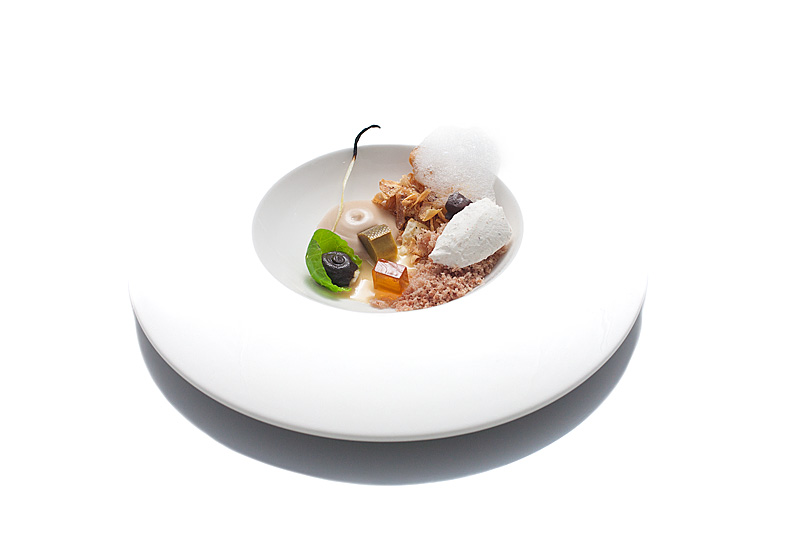
A mound of warm, bay-scented chestnut puree sits in a pool of buttery parsnip sauce. Nearby is a pile of crispy celery root chips and bacon powder. This pile is garnished with a small lump of brown sugar crusted in chocolate, bay leaf bubbles, and a dollop of nutmeg mousse. Also floating in the parsnip sauce is a cube of marsala gel, egg yolk cooked with long pepper, and a brussels sprout leaf filled with warm black truffle puree. The chestnut is garnished with a crunchy burnt onion ‘matchstick’.
This dish is natively an Autumn one, but I wanted to wait until winter for one of the ingredients to come into season.
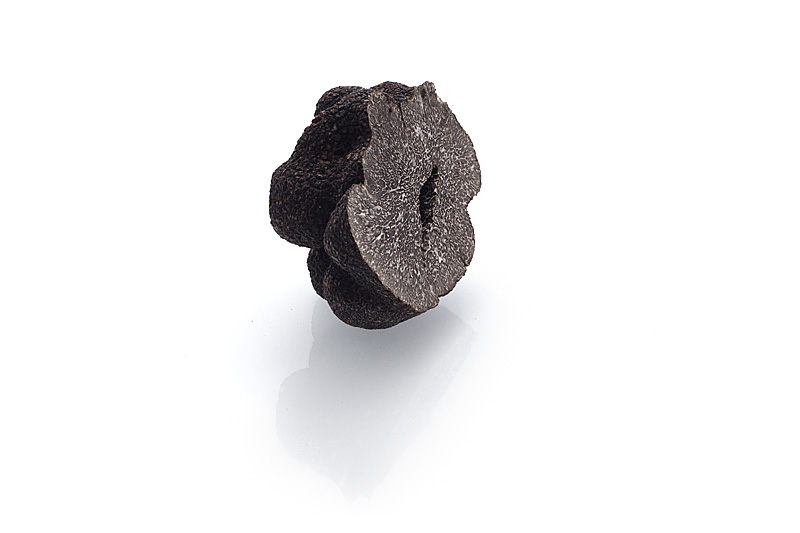
Over the course of this project, I’ve worked with truffles multiple times. My first exposure to them was in Hot Potato, Cold Potato; I was trying to find truffles in Wellington, New Zealand, and knew zero about them. Because I didn’t know any better, I bought a small, dusty preserved truffle (I mistakenly referred to it as “pickled”, even). It sort of tasted like nothing by itself, but because it was swimming in a soup made of heaps of truffle juice, I didn’t really think much of it. A few years later, for the Chicken Skin dish, I knew enough to suspect that Alinea meant fresh truffles, but was a little perplexed by the experience of buying one. Several months ago, I made a truffle puree using pre-frozen summer truffles for the Wild Bass dish and was disappointed with how forgettable the flavor was. Because I’m down to the next-to-last dish for this project, I wanted to go all in and work with fresh, Perigord black truffles.
Perigords are in season starting around December. They’re coming into peak availability right now, and easily overlap with the season for chestnuts. The puree in this recipe yields a massive amount, so to try to trim down on what I knew would be a pretty steep cost, I halved it. I woke up early Saturday morning and took the BART over to the SF Ferry Building to visit Far West Fungi. There I found a handful of small and a couple massive black truffles, one of which fit the bill for the weight I needed (1/4lb for half a recipe of truffle puree). The perfume of this truffle was immediately punchier and more intense than that of the summer truffles I’d worked with before (and as for the preserved truffle, it is definitely — as the shop keeper from whom I bought it attested — a shadow of its former self). It was firm and rich with an earthy smell Sarah likes to call “footy”.
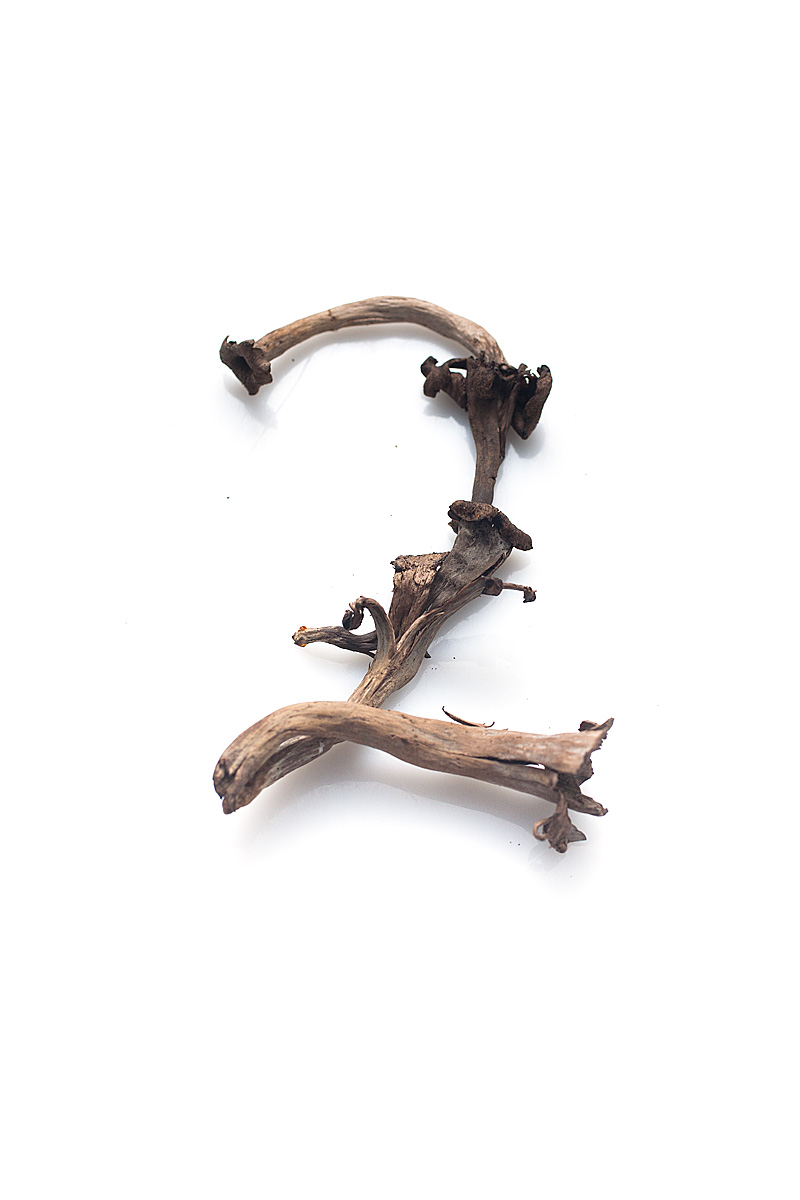
I brought it home and simmered it with some black trumpet mushrooms, potato and black truffle juice until the liquid reduced and thickened, then pureed it in my blender with some truffle oil, salt, and a dash of sherry vinegar. The smell filling the kitchen was dense and intoxicating, and I was excited tasted it.
So?
I mean, it’s delicious, delicious, but I say this with a weighty shrug. To me, the flavor of black truffle tastes nostalgic, familiar. Let me be quick to point out that I never ate truffles of any form growing up in rural Kentucky, so there are no memories locked deep in my psyche that are tickled by the taste of truffle. But every time I taste it, I just think “of course“. Of course, this is what food should taste like. This is the taste of really perfect, ideal food. Maybe this is the allure of the almighty Black Diamond? Maybe its nearly-universal appeal is that it tastes so “right”? It strikes me as a fundamental flavor, and should be as ubiquitous as butter or cream. It’s not flashier than either of these; finger limes, rhubarb, tonka bean, shiso…these are all way more interesting flavors, peculiar and memorable. Black truffle just tastes so integral.
Having said that, I get it now. Perigord black truffles offer a fullness, a wholeness that — despite seeming so fundamental — is ultimately irreplaceable. I’m glad I’ve had this arc with this ingredient.
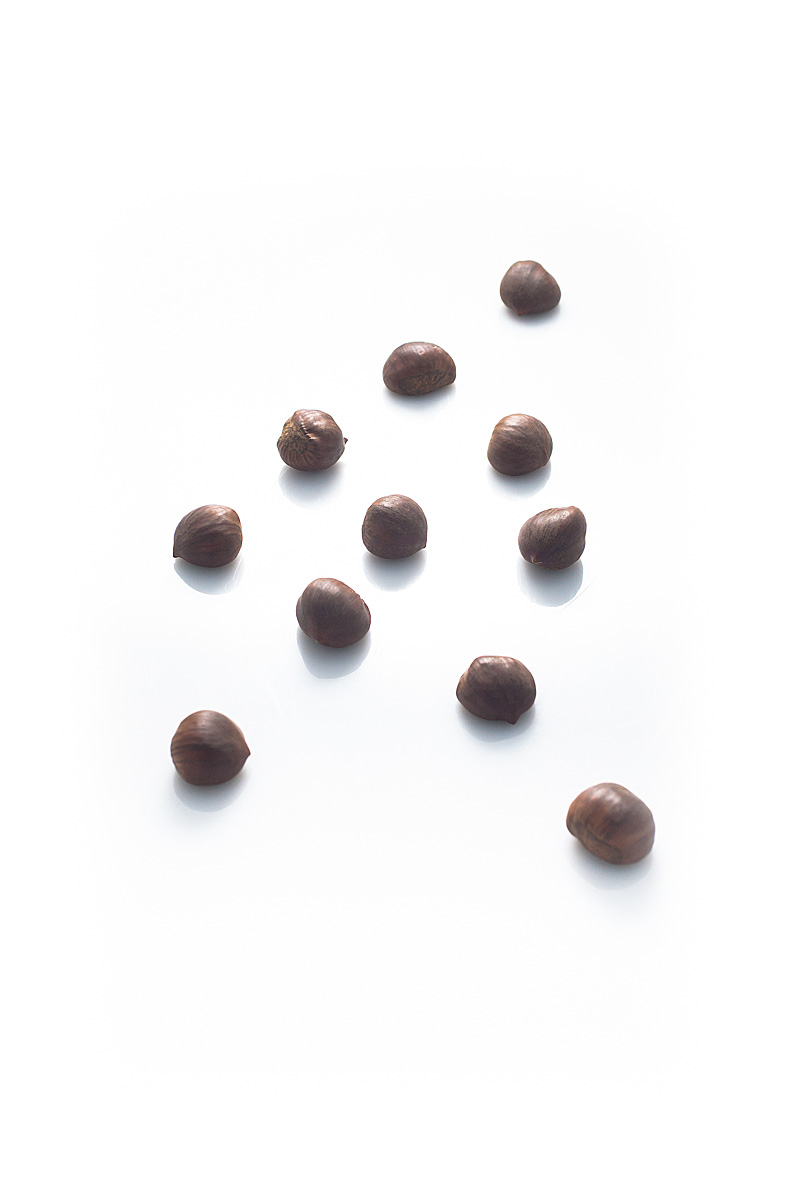
To make the chestnut puree, I first punctured some chestnuts with the tip of a knife, then roasted these in an oven for 30 minutes at 400F to make them easier to peel. Failure to puncture the skins results in exploding chestnuts in your oven. I simmered the nuts and some bay leaves in cream until they were tender, then pureed the mixture to yield a smooth cream.
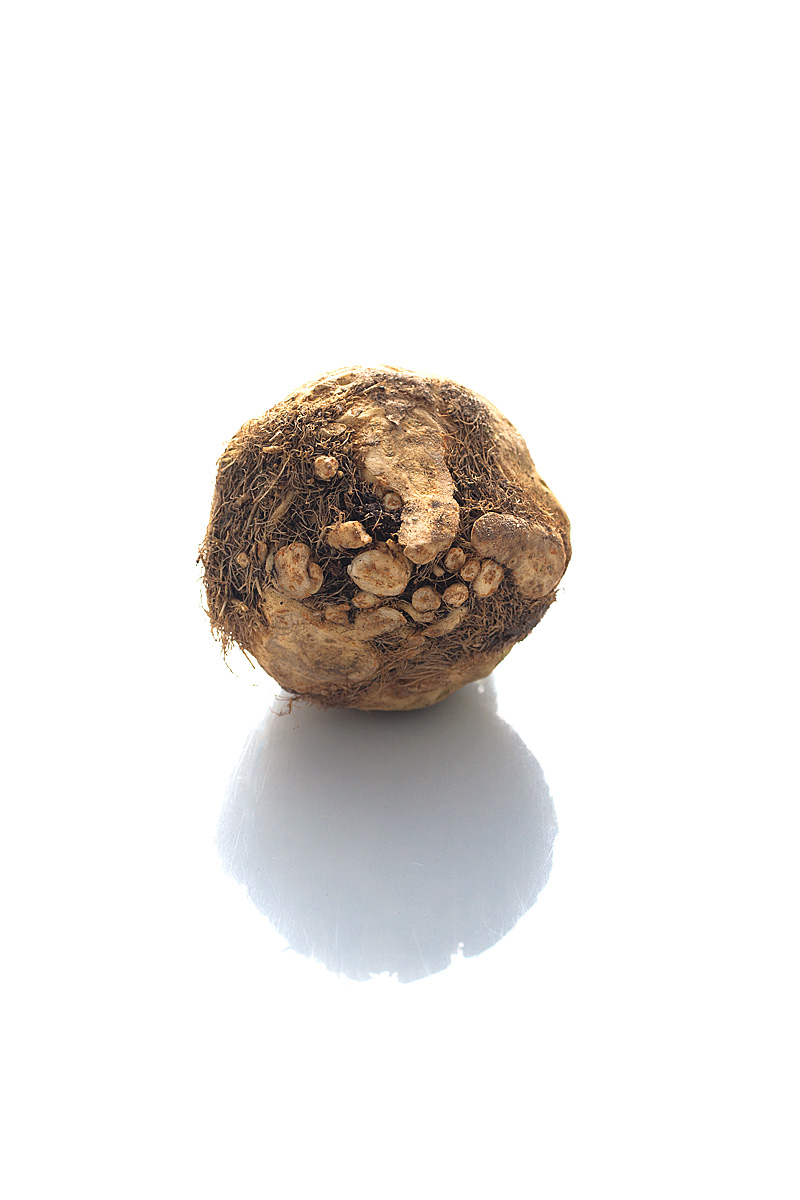
To make celery root chips, I peeled and thinly-sliced a whole celery root, then dusted the slices in cornstarch and fried them quickly in oil. These were seasoned with salt & pepper and crushed lightly.
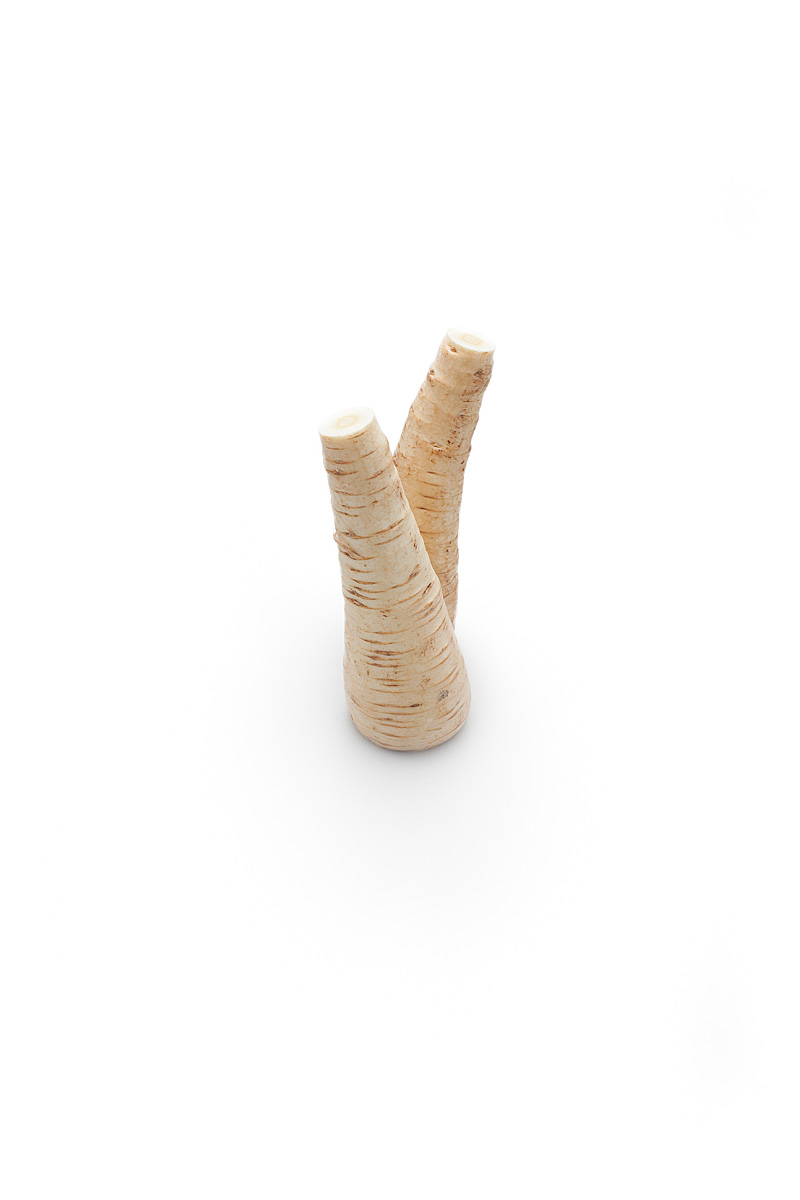
The parsnip sauce started with several parsnips that I juiced, then reduced into a concentrated liquid. This was mixed with cream and emulsified with butter, then held warm in a water bath until I was ready to plate stuff.
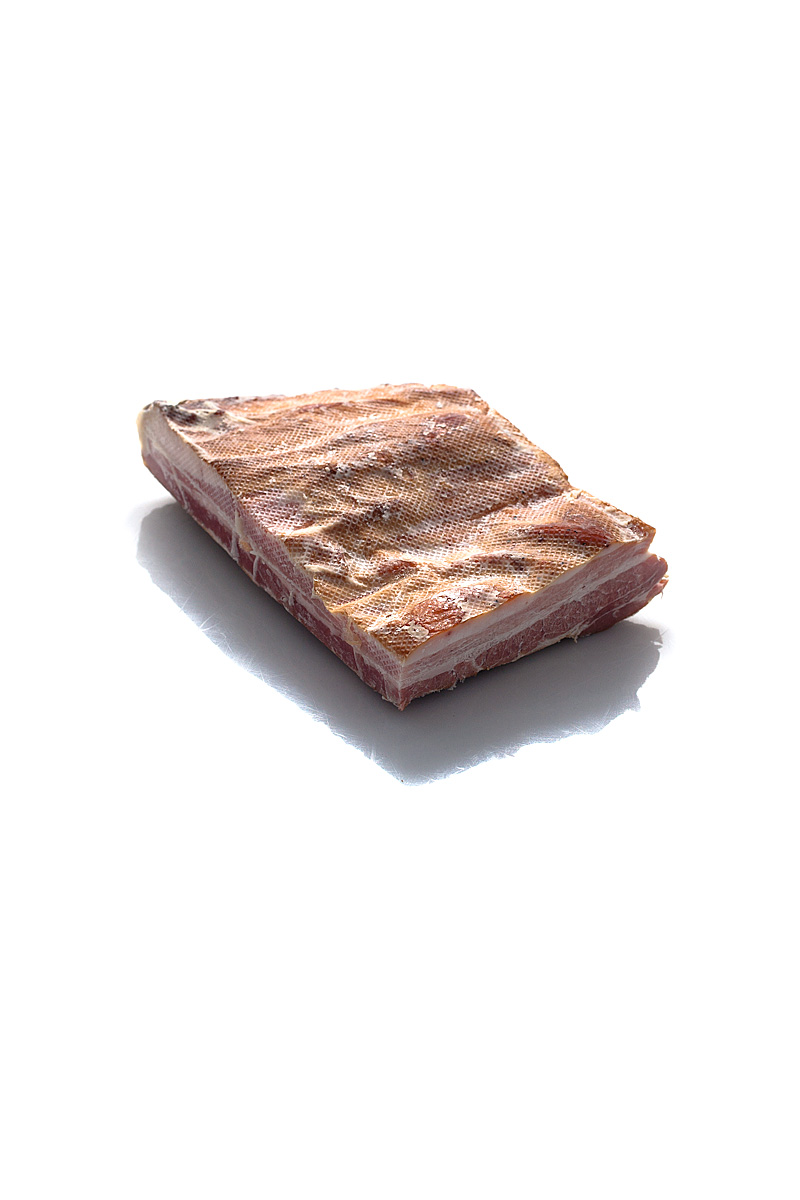
The bacon powder is made by freezing some bacon, then microplaning it onto some parchment and dehydrating it until crisp. One of the many things I look forward to playing with once I’ve completed this project is curing my own meats. I took a baby step into this for this recipe by making my own bacon, which is one of the easiest cured meat products to make. I bought a 3lb pork belly from Marin Sun Farms, then vacuum-sealed this with a cure of kosher and pink salts and brown sugar. The meat was left to cure for a week, then hung in cheesecloth in my fridge for another week. Many recipes include liquid smoke in the cure, which I eschewed in favor of smoking the meat directly with our smoker. The meat is cooked to an internal temperature of 150F, at which point you can slice it and fry it up or freeze it. I did both; the bacon is lovely, salty and meaty, and the smoke flavor is rich and much more complex than store bought bacon. The frozen section was grated and dehydrated until it was light and powdery.
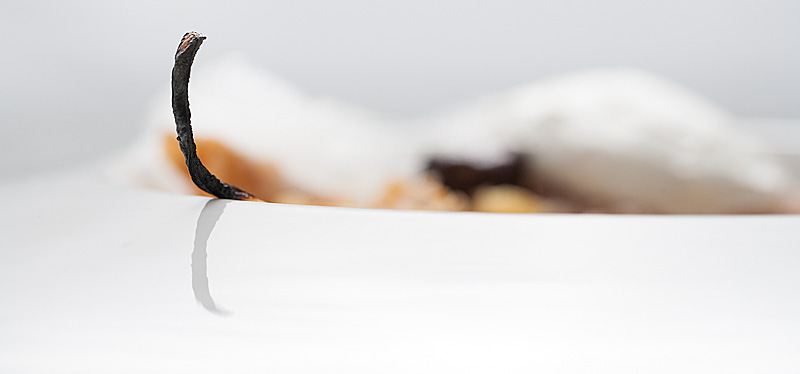
The smoky bacon was nicely-complimented by the charred onion sticks, made by candying strips of onion briefly, then dehydrating them until crisp and sweet. I charred the tips with a brulee torch just before plating.
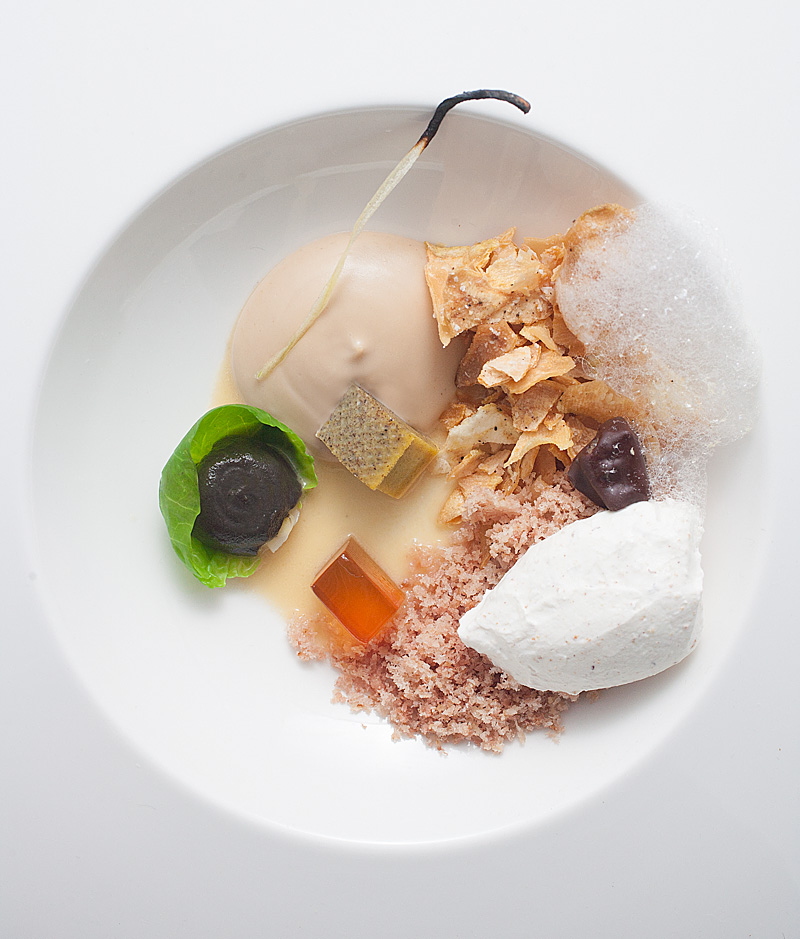
Nutmeg mousse began as creme fraiche. I whisked in some salt and freshly-grated nutmeg, then continued whisking until it became stiff, like whipped cream. This is neat; I didn’t realize this could be done with creme fraiche but it makes sense. The mousse is tangy and nutmeg-y, and can be scooped like soft ice cream.
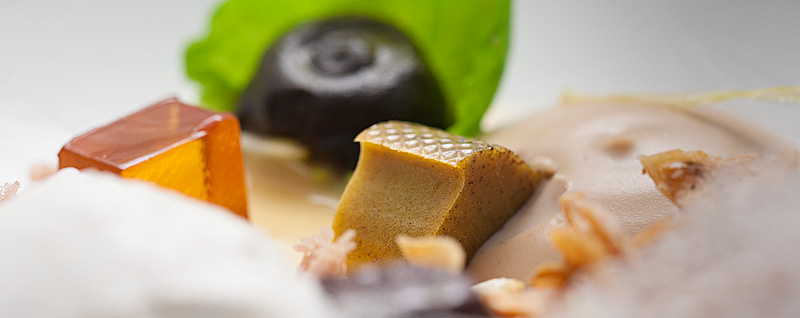
The egg yolk shape was made by whisking some egg yolks, cream, and crushed long pepper together, then putting these in a vacuum bag and rolling it into a cylinder. I cooked the egg cylinders at 180F until they were firm, then sliced them into small half-discs. They have a firm, tofu-like character and a nice flavor. Were I to do them again, I might try cooking them at a lower temperature to see what happens; as it was, the texture was a little firm for me (sort of like halloumi or something).
The recipe includes chunks of brown sugar cubes dipped in chocolate, which are easy enough to make. I wanted to play with a different idea: I melted an equal mixture of chocolate and cocoa butter, loaded it into my cream whipper, then squirted it into a vacuum canister. I pulled a vacuum on the container, which causes the microbubbles in the mixture (contributed by the cream whipper) to expand greatly. The cylinder is then refrigerated to set the aerated chocolate, and the vacuum is released. The result was a delicate, lovely chocolate lattice that collapses quickly on the tongue. Sort of like a crystallized chocolate foam. It’s super-rad, but was too delicate to hold up to the warm ingredients in the rest of this dish…it melted immediately.
I enjoyed this dish marginally more than Sarah, which is to say we both enjoyed it a lot, but Sarah’s not as on-board with the truffle as I am. Or maybe I should say she’s less-impressed by it, but this could be because she hasn’t spent 5 years converging to this point. The rest of the flavors were delicious though. I recall Martin of Alineaphile noting that some of the flavors didn’t work for him. There’s a lot going on here, to be sure, but I found eating it greedily to be the best move: trying to get a little of everything on my spoon at once resulted in an incredibly-complex mixture of flavors, textures, and temperatures that was awesome. Picking around the dish and only tasting a couple things at a time was a bit less engaging for me. Overall though, this is a really lovely dish that’s delicious on a cold day.
And with that…one dish remaining.
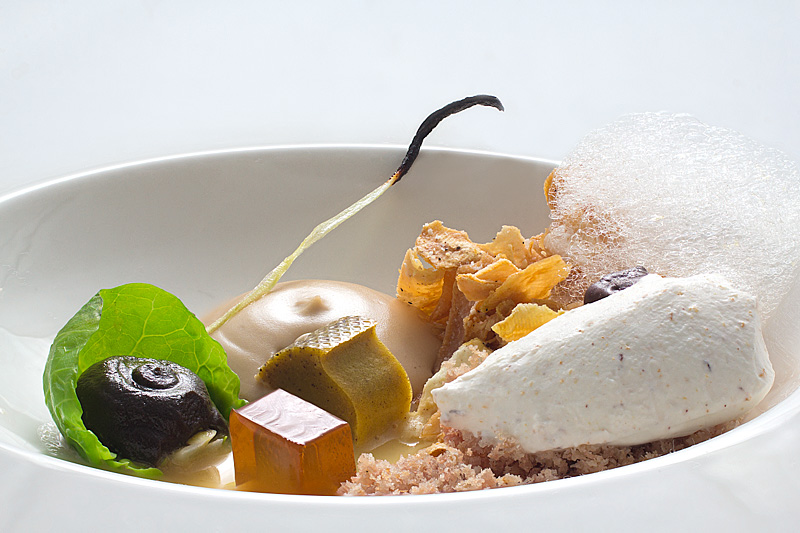
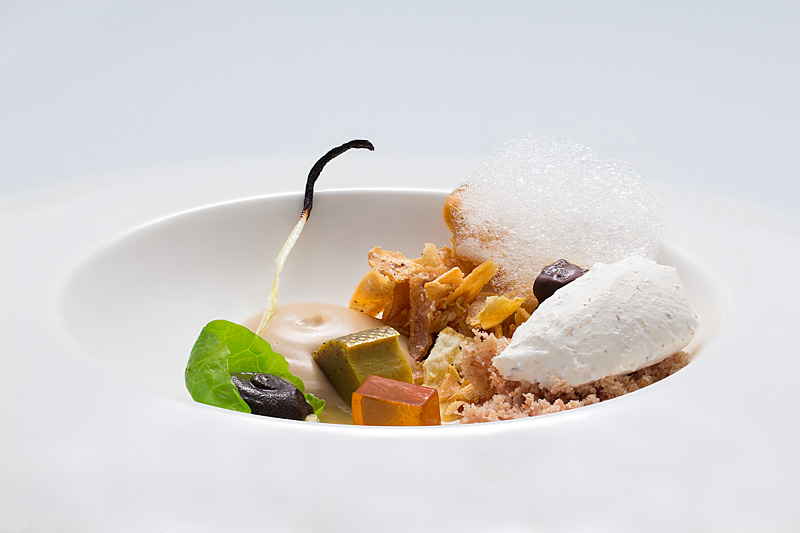
Wow another amazing post man! I still have yet to get this cookbook, but you definitely make me excited to get it. Love that you’re doing videos now!
Happy Blogging!
Happy Valley Chow
Awesome, thoughtful post with great pictures as always, but it was really cool to get to see the process and your work space in the video! I always like to see how the magic goes down behind the scenes, so I particularly enjoyed this.
Good luck on the final recipe!
Hey thank you very much Veronica!
Absolutely amazing looking pictures. The video is very coo too!
From my experience with summer and winter truffle, the winter ones are a lot more fragrant with lots of more flavor than the summer ones. One almost can’t compare them.
Almost the same, I think, when you compare between the white and black ones.
Wow! Unbelievable that you only have one more to go from this massive tome. Maybe you want to tackle Historic Heston next? 🙂
I wish I could see a picture of your finished aereated chocolate. Did you use the FoodSaver canister for that or a chamber vacuum? I was never sure if my FS had enough oomph to create a good aereated mousse and for some reason I never gotten around to trying yet. I should give the mango mousse a try from Modernist Cuisine.
Hi Elie! Thank you!
For the aerated chocolate, I used a foodsaver canister, and a 50/50 mix of 70% chocolate and cocoa butter. This ratio wasn’t based on anything other than a guess. I also didn’t have a cream whipper charger, so I used a soda charger (Co2) after first trying just some baking powder (the latter didn’t give me enough aeration when I pulled the vacuum). The MC books show the foodsaver canisters used for their aerated foams. Seemed like it had enough oomph to create a pretty brittle chocolate. The only tricky thing is releasing the vacuum very slowly…a fast drop in pressure causes the aerated chocolate to get crushed.
Thanks for the tips Allen. A slow vacuum release makes a lot of sense. I’ll give it a shot soon.
Never ceases to amaze me. Have you thought about what you are going to do post project? Another book perhaps?